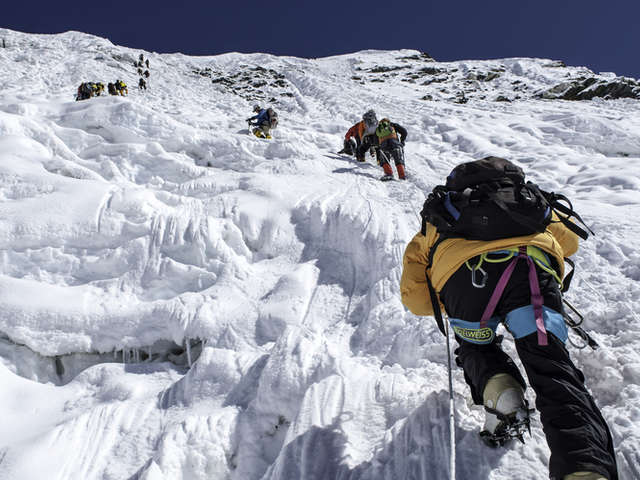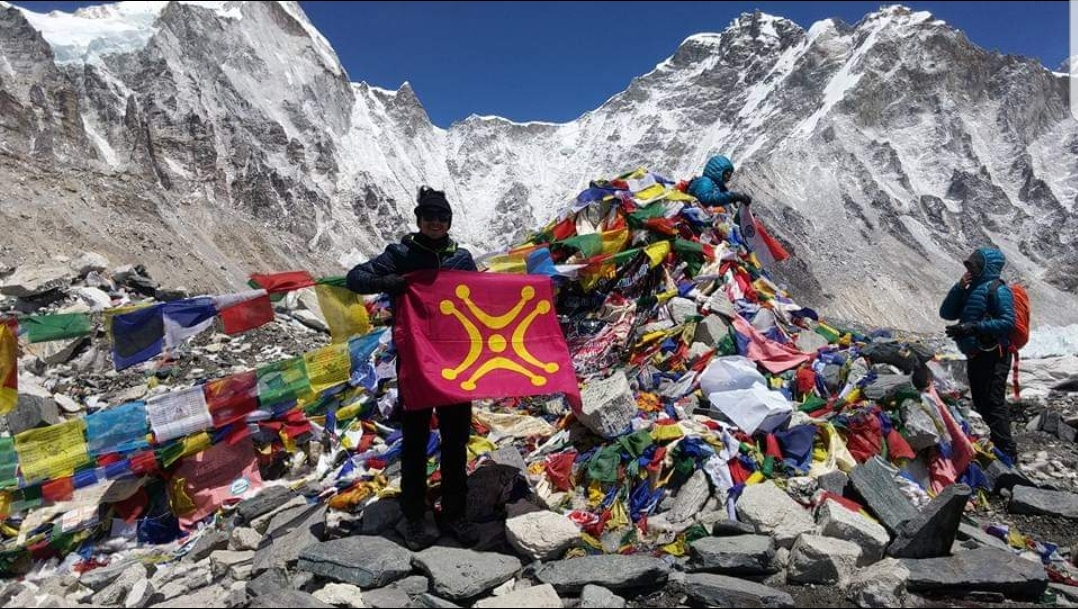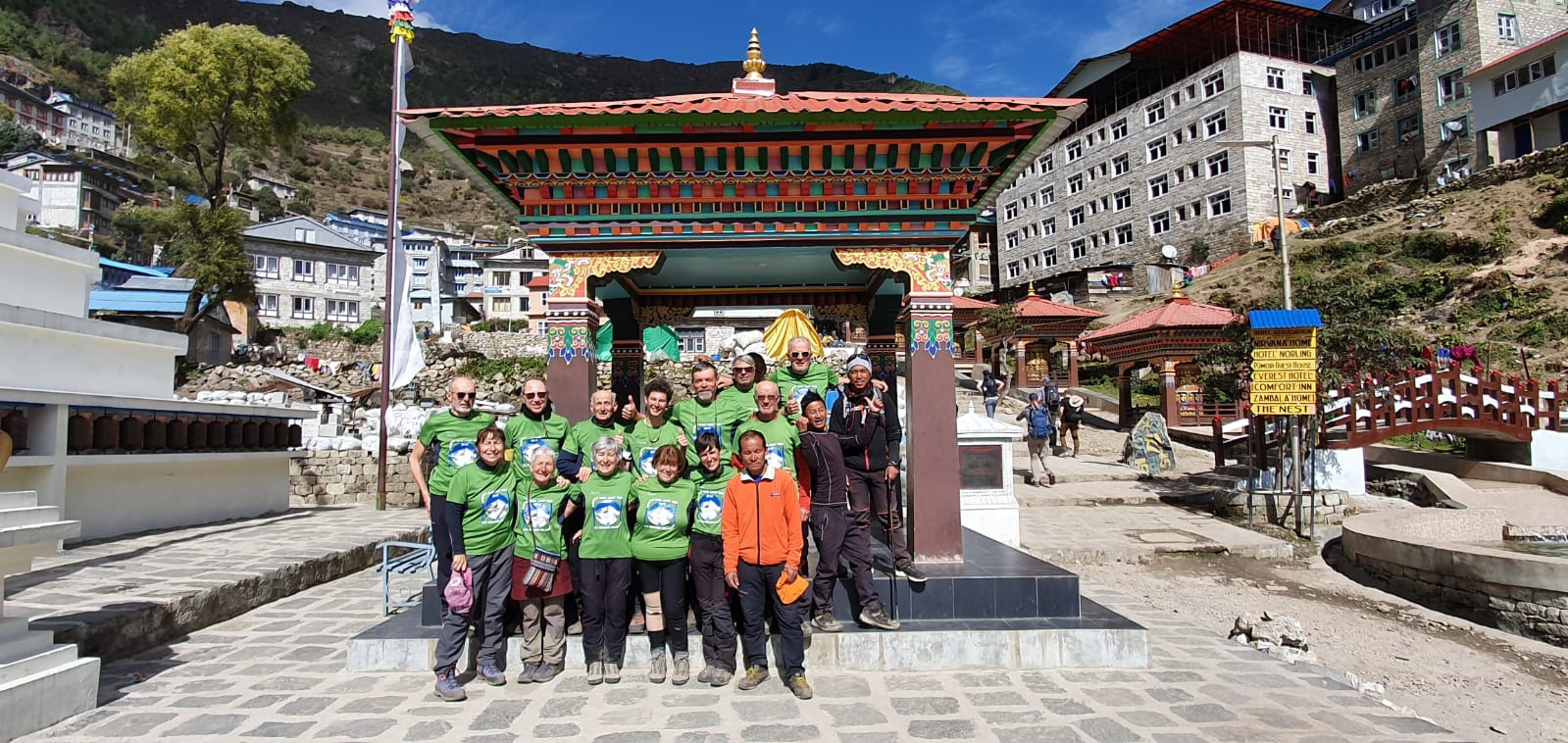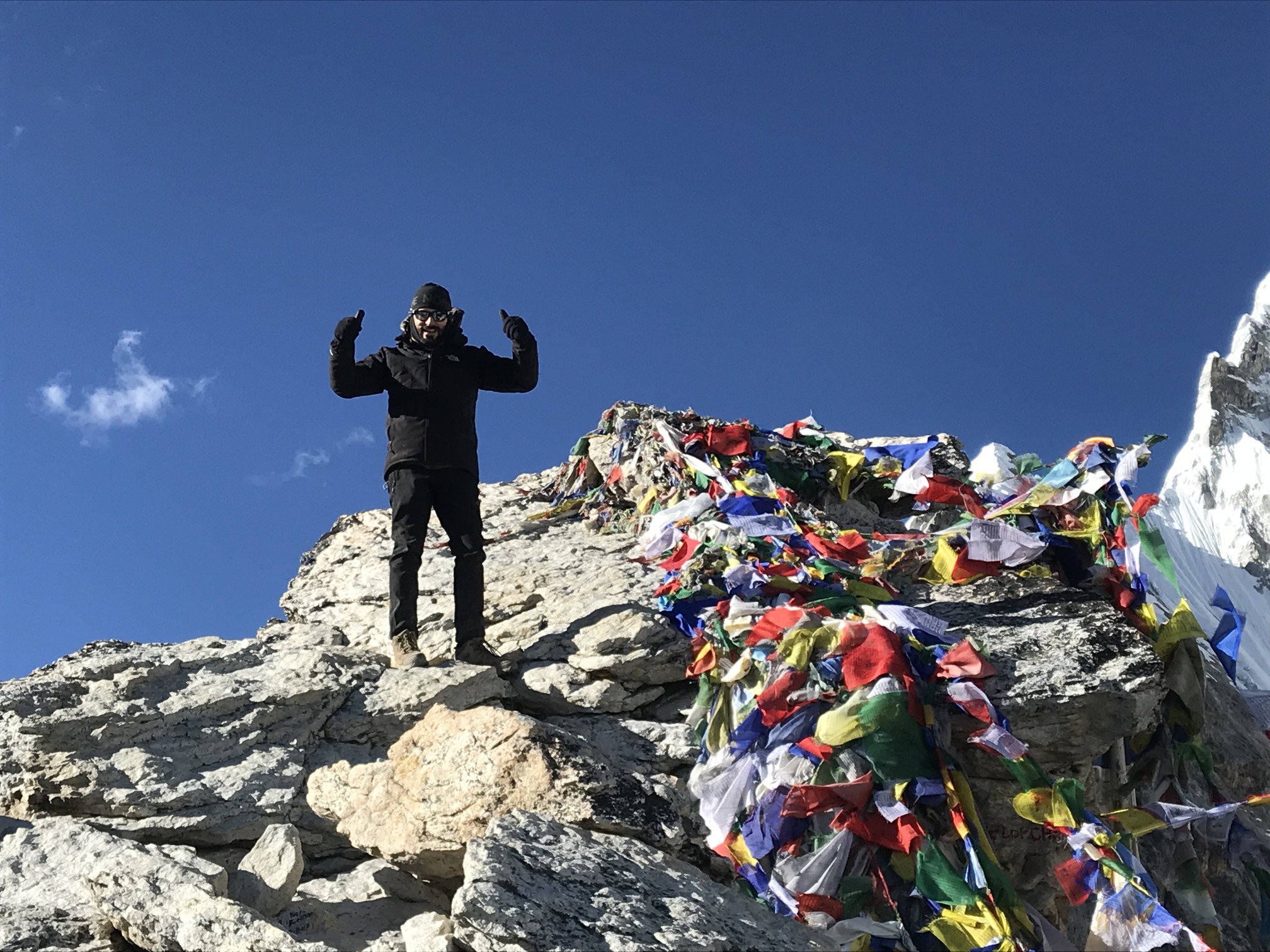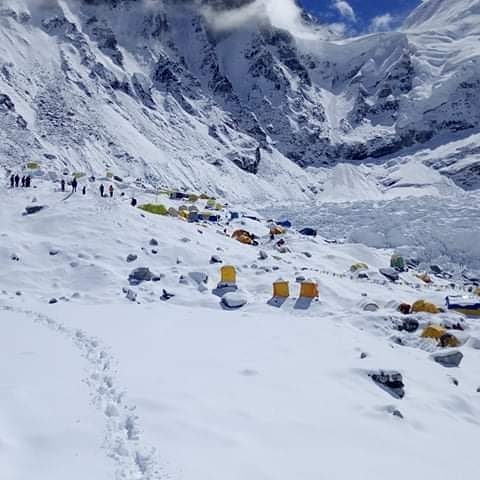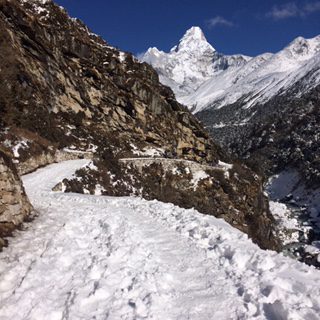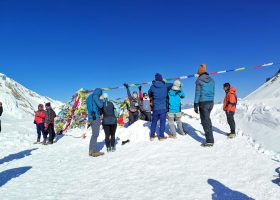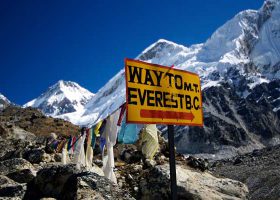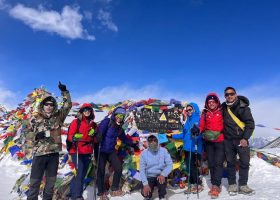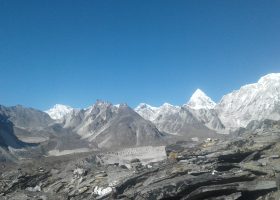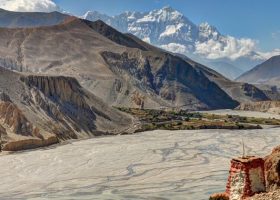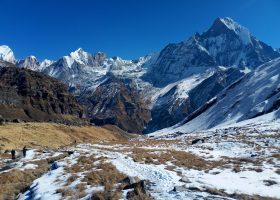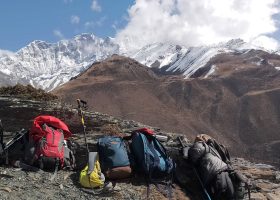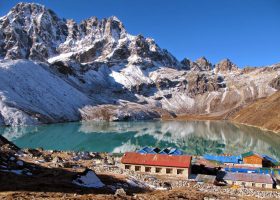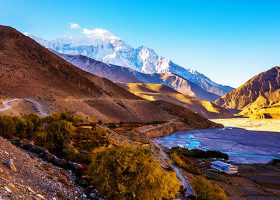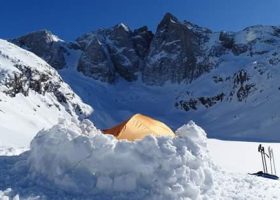Trip Highlights
● Visit Kala Patthar which is one of the most famous destinations in Nepal near Everest Base Camp
● Reach the summit at 6188m above sea level
● View of Nuptse, Lhotse, Lhotse central and Lhotse Shar which are all 7000+
Island Peak Climbing is a respected pinnacle endeavour involvement in the Everest area of Nepal. From the ocean level, Island crest (otherwise called Imja Tse) is wonderfully situated amidst Chhukung valley, over the Chhukung Glacier between Mt. Lhotse and Ama Dablam. This summit, descending from the southern end of Lhotse Shar as an expansion form the edge, sits like an island in the ocean of ice. And so in this way it was named Island Peak by a climbing group of Eric Shipton in 1953. This pinnacle is the best trekking peak for experience climbing.
Among the 33 crests in Nepal, which are formally opened as trekking tops, trek to Island Peak Climbing with EBC is viewed as the most breathing life into the experience. It is because this climb to the summit offers fantastic perspectives on the Himalayan range. In addition, the perfect culture, custom, and religion of the Sherpa individuals come within transit. The Island Peak climb offers a magnificent perspective on summits like Lhotse, Lhotse Middle, Lhotse Shar and Nuptse which are all over 8000m framing a semi hover in the north while Baruntse and Ama Dablam in the south and Mt. Makalu welcomes you in the east.
The trail also offers a very good chance to experience the chilly Lhotse and Imja, religious communities of Sherpas, suspension spans, versatile settlements with banners, petition rocks, and Sagarmatha National Park that features uncommon flora and fauna. Also, the warm accommodation offered by the Sherpa community makes the trail increasingly awesome.
There are two best occasions to ascend Island crest: mid-March-May (Spring) and mid-September-November (Autumn), as the climate is similarly warm and the perspective on the mountains is perfectly clear. You’ll be amazed to see something that beautiful with your own eyes. In the event that you are arranging your trek in winter (December-February), be prepared to manage the chilling winds.
This trek is troublesome, however not specialized. Along these trails, a beginner or genuine climbers who are physically fit and acclimatized can select this trek in the Khumbu locale with fundamental procedure and data on mountaineering. Also for those who are searching for a test can attempt another trail, that is, Everest Base Camp with Island crest climbing. Besides, Pisang Peak climbing is another superb option for adrenaline freaks. The whole bundle of Island Peak Climbing is worth all the money for the adrenaline enthusiasts.
Note: In some cases, there might be sudden changes in the weather with respect to the recently given household flight timetable to and from Lukla. Your plane may be deferred for a couple of hours or even a couple of days, completely relying on the weather conditions.
Moreover, trekker’s security is dependably the best need on any trek. In this way, the group chief on the obligation is given each expert to make changes in the agenda gave in the event of surprising climate change, the unsatisfactory wellbeing state of a gathering part or an unexpected cataclysmic event. If it is very necessary , group members may drop any piece of the agenda consulting with the pioneer chief. Subsequently, in such a circumstance we ask for you to co-work with our group chief and stay adaptable.
Details Itinerary
Itinerary
Day 01:Arrival Kathmandu
Day 02:Fly to Lukla then trek to Phakding
Day 03:Phakding to Namche Bazaar
Day 04:Namche Bazaar : Acclimatization
Day 05:Namche Bazaar to Tengboche
Day 06:Tengboche to Dingboche
Day 07:Dingboche to Chhukung
Day 08:Acclimatization: Climb Chhukung Ri and trek back to Chhukung
Day 09:Chhukung to Island Peak Base camp
Day 10:Pre-Climb training on Island Peak Base Camp
Day 11:Island Peak Base Camp to Island Peak Summit, back to base
Day 12:Island Peak Base Camp to Pangboche
Day 13:Pangboche to Namche Bazaar
Day 14:Namche Bazaar to Lukla
Day 15:Fly to Kathmandu
Day 16Final departure-
Cost Details
Cost Includes
- Airport to hotel pick and drop
- Two-night hotel in Kathmandu at three-star categories in BB plan
- Accommodation in Mountain lodge run by local people during a trek
- All meals during trekking
- One highly experienced mountain Guide and Porter
- Accommodation food, drinks, salary, insurance, transportation of both trek guide and Porter
- All necessary paper works and Sagarmatha National Park entry permit
TIMS Card (Trekker’s Information Management System card)
- Kathmandu/ Lukla / Kathmandu airfare.
Cost Excludes
- International airfare
- Travelers insurance
Cold drinks (Alcohol and cold drinks)
- Boiled water, Hot shower, Mineral water, Batteries charge and hot drinks (in pot)
- Lunch and dinner in Kathmandu (Approx. 10-12 USD)
Map
FAQs
-
Clothing & Equipment
-
Acclimatisation & Oxygen
-
Guides, Sherpas & Team Members
-
Health & Fitness
-
Communication & Electronic Devices
Will there be any access to a satellite phone? If yes then what would be the charges for usage?
Yes, most of our expedition guides take satellite phones and you are welcome to use these at wifi and local moble call Most often, your guide will post daily dispatches on the Nhh website in which your friends and family can follow your progress.I want to contact my friend or relative, who is on one of your trips, how can I reach them?
Many of our treks and climbs send daily internet dispatches, and we receive updates from our guides while they are in the field. The best place to reach a loved one is through our office.Will there be any power source for charging batteries, etc. available throughout the trek?
For lodge-bassed treks, many of the lodges have power available with typical Asian plugs (two nail like horizontal prongs) and offer to recharge for a fee.We can cater for special power requirements at an extra cost or advise on the purchase of a suitable personal solar charging system - please enquire with our office.
-
Insurance
-
Fees & Payments
-
Photography
-
Safety
-
Employment
Manual Notes:
PACKING HELP FOR TREKKING TOUR
Long trekking trousers, wind- and water-repellent
Functional shirt short-sleeved
Long-sleeved functional shirt
Fleece jacket or sweater, Trekking socks normal and warm
Functional underwear, Long underwear
Warm sleepwear
Clothing for the lodge
Wind and waterproof rain jacket
Down jacket (Primaloft) thin with hood, Down jacket warm with hood
Cap warm, Buff bandana / scarf, Coneflower / Cap
Gloves normal and warm, Trekking shoes ankle-high
Trekking sandals or sneakers for Teahouse
Category 4 sunglasses, headlamp
Sleeping bag
Drinking bottle, thermos bottle
trekking poles, spikes
Day pack, rain cover
packing bag, Plastic bag for documents ect.
Big bag or backpack
First Aid Kit…painkillers e.g. Ibuprofen, diarrhea and vomiting remedies, electrolytes, cold remedies, wound disinfectant, plasters, blister plasters
Sun protection face and lips with high SPF
Toilet paper
handkerchiefs, microfiber towel
ear plug, nail clippers
brush, comb, Wet cleaning wipes
hand disinfection
toothbrush, toothpaste
washing gel
face cream
lip care
power bank, Phone, charging cable, headphones, Camera, SD card, spare battery
E-reader, book, notebook, pen
passport, passport photos
cash, credit card
Document insurance for illness

